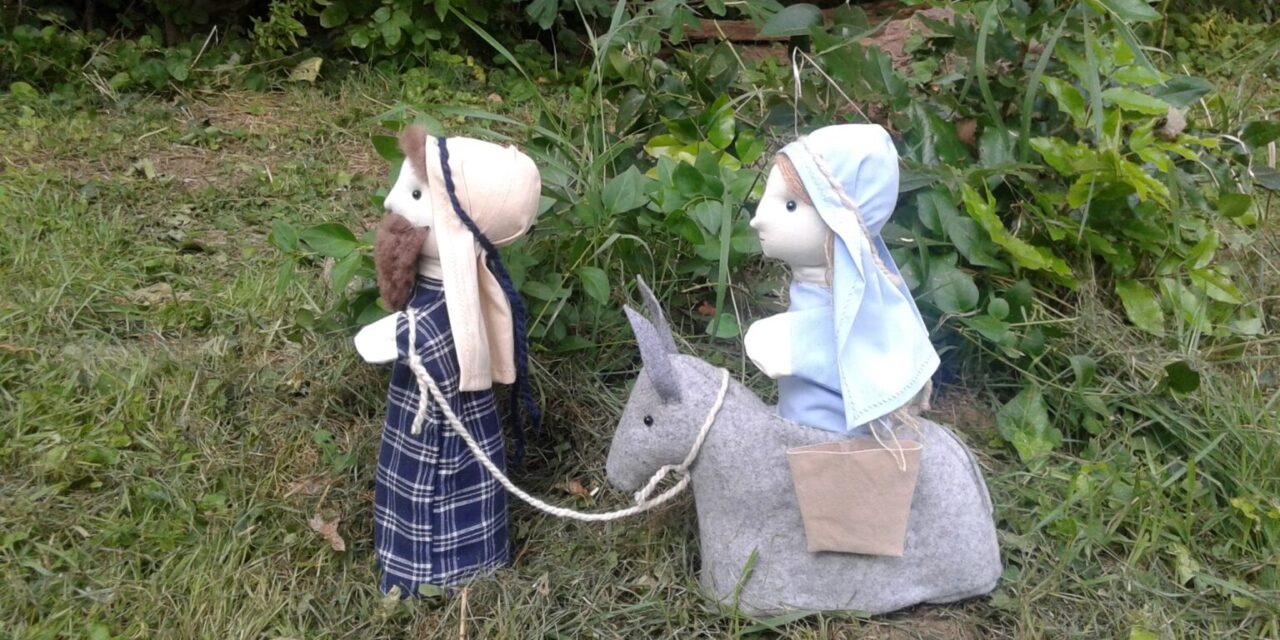An interview with a special puppet designer.
Nowadays, one of the biggest challenges both in religious education classes and in the family is that children are exposed to immeasurably more visual stimuli than even ten years ago. The story told orally, and especially its message, is difficult to pass the stimulus threshold. But what happens when a puppet figure brought to life helps the religious teacher or the parents? Can such a device capture the attention of children and can it be an effective channel for teaching faith?
In the interview, we can learn about a creative solution that can open up new dimensions in the world of religious education. In an unusual interview, we talk to Júlia Kuruczné Lovas, who, as an experienced teacher and inspired craftsman, designs and creates the puppets herself, which help children discover the world of faith and the Bible.
During the interview, we can find out how the idea came about and get to know Júlia, who is behind it all. We also receive valuable advice that can help families with young children in religious education, and of course we are also curious about where practicing religious teachers can get professional help and support for using puppets.
What is different about a religion class, for which the religion teacher prepares with your puppets? Do you already have feedback or experiences in this regard?
Nowadays, children are exposed to a lot of visual stimuli, it is difficult to attract their attention with verbal information or with a stick of chalk in front of the blackboard. The puppet figure - if used skillfully - can enchant them, since for them it is a living person, it moves and reacts to their emotions and reactions. You can tell your own story and start a dialogue with the little ones. In addition, even the little ones can bring finger puppets (e.g. lambs) to life. By hiding in their shoes, they can express their emotions and thoughts more bravely.
How did you come up with the idea to use puppets to represent biblical characters or important personalities from church history? Tell us about yourself and your idea!
At the time of the regime change, when my own, older children were born, there were hardly any available tools and professional materials for the religious education of young children. There were not enough qualified religious teachers who could meet this task both theologically and methodologically, who would have known the age characteristics of this age group. I myself have met a kindergartner who had to teach the Ten Commandments, and a junior high school who had to learn the feasts of Mary...
In our family, crafts were part of everyday life, something was always being made, a kind of "creative chaos" surrounded us.
Since I was preparing for a career in children's clothing design, I learned this profession and also enrolled in drawing (my teacher was Simon András, who has since created a very unique style). I find both of them very useful in puppet design. I spent a year in London learning languages and babysitting. There they seemed to preserve the tradition of puppetry better. The first puppet designs were also made here. I only obtained the teaching and developmental teacher qualification later, already with my own family.

Source: 777blog
Am I right that you are originally a development teacher? What does a language and speech development teacher see in these puppets and in religious education using such tools? How do these puppets help children develop?
I consider it most important to create a loving atmosphere and attract attention, where the little ones cooperate and open up easily. The primary goal of religious education is not development, it is a kind of positive side effect. Rarer words that come up during each parable (manger, ark, flock, leaven, candlestick, etc.) can be incorporated into the children's vocabulary; repeating and memorizing a longer series of events improves their memory.
But nowadays there is no question that it is at least as important to recognize, name, and raise awareness of emotions.
And the biblical stories offer plenty of opportunities for these. Even a little preschooler can wonder what the lost lamb must have felt when he saw Jesus approaching, or what Martha thought when her brother didn't help her with the hospitality?
Do you have a personal favorite, or one that you're most proud of, either for its implementation or its use?
The St. Elizabeth glove doll is the number one favorite. It cannot be played enough that the loaves smuggled out to the poor turn into roses and the evil courtesan turns away intoxicated. The top of the tricky little basket can be turned over.
Is there a forum, interface, or idea library where religious teachers can get help with the use of puppets?
I try to post professional materials on my website ( www.leonettadesign.hu ), and I recently started the "BÁBLIA dolls for the Bible" Facebook group, where I would like to collect experiences. Everyone who uses my Bible charms can upload their photos, materials, even lesson plans. I can honor this with a 20% coupon that can be used on the next order.
What advice would you give to families raising small children for raising children in the faith? Where and how can they insert e.g. these puppets in this?
All education must be based on authentic example and unconditional love. The puppet figure (a patron saint, e.g. St. László: the figure of the knight king, Mary or Jesus) can be a good friend, a companion who can talk to the little one from time to time, helping him summarize the day's experiences, express his emotions, and relieve inner tension.
Maybe it's easier to fall asleep at night in his presence.













